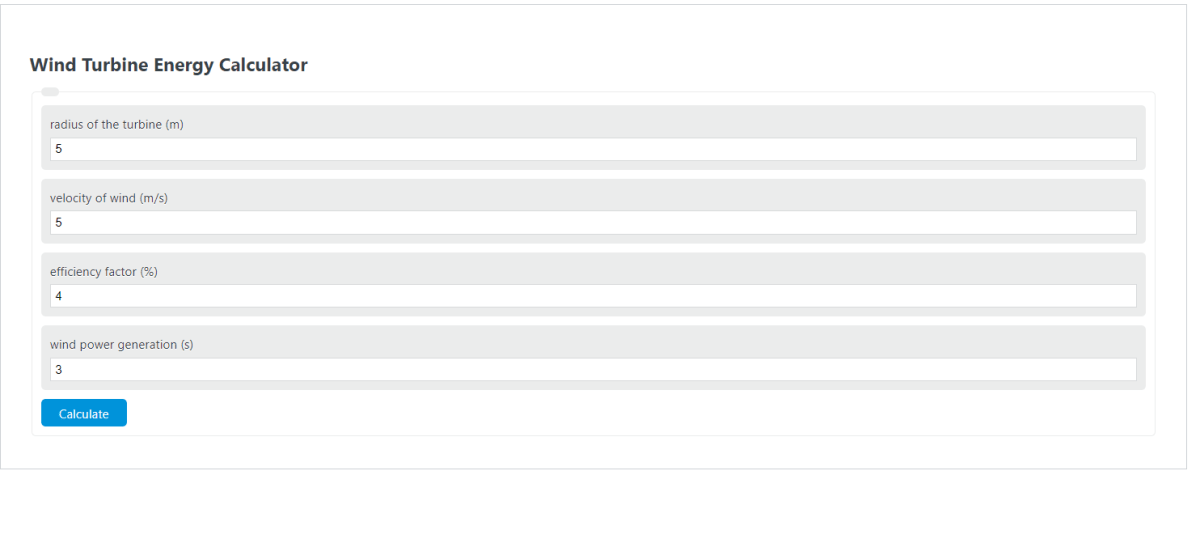Enter the radius of the turbine (m), the velocity of wind (m/s), the time of wind power generation (s), and the efficiency factor (%) into the calculator to determine the Wind Turbine Energy.
- All Energy Calculators
- Wind Power Turbine Calculator
- Wind Pressure & Force Calculator
- Compressed Air Velocity Calculator
- Pressure Volume Energy Calculator
Wind Turbine Energy Formula
The following equation is used to calculate the Wind Turbine Energy.
E = pi/2*r^2*v^2*p*n*t
- Where E is the Wind Turbine Energy (Joules)
- r is the radius of the turbine (m)
- v is the velocity of wind (m/s)
- n is the efficiency factor (%)
- T time of wind power generation (s)
- p is the density of the air (1.225 kg/m^3)
How to Calculate Wind Turbine Energy?
The following example problems outline the steps and information needed to calculate Wind Turbine Energy.
Example Problem #1
- First, determine the radius of the turbine (m). In this example, the radius of the turbine (m) is determined to be 5.
- Next, determine the velocity of wind (m/s). For this problem, the velocity of wind (m/s) is measured to be 49.
- Next, determine the efficiency factor (%). In this case, the efficiency factor (%) is found to be 34.
- Next, determine the time of wind power generation (s). For this problem, this is 5 seconds.
- Finally, calculate the Wind Turbine Energy using the formula above:
E = pi/2*r^2*v^2*p*n*t
Inserting the values from above and solving the equation yields:
E = 3.14159/2*5^2*49^2*1.225*34/100*5 = 196352 Joules
FAQ
What factors can affect the efficiency of a wind turbine?
The efficiency of a wind turbine can be affected by several factors including the design and shape of the blades, the wind speed and consistency in the area, the turbine’s height, and the efficiency of the generator and other components. Environmental conditions such as air density and temperature also play a role.
How does the radius of the turbine affect its energy output?
The radius of the turbine’s blades has a significant impact on its energy output. According to the wind turbine energy formula, the energy output is proportional to the square of the radius. This means that larger blades can capture more wind and potentially generate more energy, assuming other factors remain constant.
Why is the density of air (p) included in the wind turbine energy formula?
The density of air (p) is a crucial factor in calculating wind turbine energy because it directly affects the amount of kinetic energy available in the wind. Higher air density means more mass is moving past the turbine blades at a given speed, which can increase the energy output. Air density can vary with altitude, temperature, and humidity, making it an important variable in the formula.
